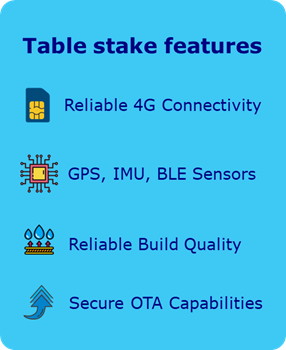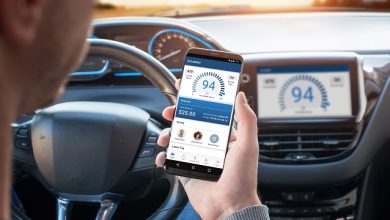Empowering micromobility EV rides with telematics & data-driven solutions

~Amit Upadhyay, Yulu
In the rapidly evolving landscape of electric vehicles (EVs), the Telematics Control Unit (TCU) has emerged as one of the most important vehicle components on which the framework for building tech operations rests. This is even more true for companies operating in the EV Mobility domain, as the core data from the vehicle is relayed to the cloud by the TCU. Further, as EVs become more and more software-defined, with electronic control units (ECUs) making critical decisions, the importance of TCUs becomes evident as it sits at the core of the components ecosystem. Telematics enables accurate identification and relaying of issues in this new ecosystem of ECUs. While TCUs that enable basic Telematics functions such as tracking and alerts cater to individual EV buyers as an add-on feature, for companies operating in the shared mobility space – they become the lifeline of operations. Before we explore how Telematics addresses some of the challenges that are unique to the micromobility EVs, let us look at some features of a Telematics system that are vital in today’s dynamic mobility ecosystem:

- Reliable Data Connectivity: The industry has already moved on from having to live with and making things work with basic 2G connectivity. Even though it is theoretically possible to run operations on a 2G network, the demanding nature of operations in a micromobility space makes 4G data connectivity a critical necessity. Given the substantial volume of data generated, and considering real-time requirements, a telematics system requires robust 4G data connectivity to ensure seamless operations.
- Key Sensors: While GPS and IMU Sensors are vital for accurate tracking, monitoring driving behaviour and generating alerts, a robust Bluetooth (BLE) stack which is interoperable across multiple generations of smartphones is essential for a hassle-free app experience.
- Robust Build Quality: Telematics devices must be designed with robust construction to withstand the demanding conditions of shared mobility and ensure uninterrupted functionality.
- Secure OTA Capabilities: With a constantly changing operating environment for vehicles on the ground, all the devices in the field must have an efficient, full-proof and secured over-the-air (OTA) updates mechanism for the firmware.
Shared Micromobility EVs: Unique Challenges of Shared Mobility
Micromobility EVs which are designed for shared mobility services face distinctive challenges that demand robust solutions. These are as follows:
- Rough Usage and Durability: Shared mobility vehicles endure rough handling, including potential vandalism. As a result, both vehicle components and overall design must be sturdy and durable to withstand these demanding conditions.
- Always Available: Unlike personal or fleet-use EVs, which can be operated even if the vehicle is in offline mode, shared mobility vehicles must be continuously available to users. This necessitates that cloud connectivity is available with high reliability and that the latest information about the vehicle’s location, fault and battery level is synchronised. This information is used for maintaining vehicles with above-the-threshold charging levels. Further, it must be ensured that the vehicle is free from faults to ensure uninterrupted service.
- Charging Infrastructure Management: As shared vehicles are not owned by end-users, service providers must establish and maintain a reliable charging infrastructure to meet demand. Accurate prediction of demand based on vehicle location and battery state is crucial for efficient infrastructure management.
- Regulatory Compliance: Shared mobility vehicles must adhere to specific regulations, such as speed limits, limits on the power delivered by the motor and parking restrictions.
- Regular Maintenance: The relatively higher usage of shared mobility solutions necessitates more frequent maintenance cycles to ensure optimal performance, safety, and a positive user experience.
- Security and Access Control: Shared mobility vehicles should be readily available to authorised users via a mobile app while implementing robust security protocols to prevent unauthorised access or misuse beyond what is sanctioned by business logic.

Leveraging Telematics for Enhanced Micromobility EV Rides
A mature and proven Telematics stack provides the foundation for addressing the above-listed unique challenges of shared micromobility EVs. By incorporating smart sensors and algorithms, real-time decision-making and a secure data pipeline to the cloud, telematics systems offer intelligent solutions for optimising shared micromobility EV operations.
Addressing Unique Requirements of Shared Mobility
Telematics solutions which cater to the specific requirements of micromobility EVs must include a range of unique features and functionalities:
Onboard sensors with real-time decision-making: To withstand rough handling and potential vandalism, telematics devices should possess robust build quality and generate quick alerts in response to any acts of vandalism. Monitoring driving behaviour enables the identification of misuse, while the ability to sense overloading of the vehicle prevents potential damage. This means that onboard sensors such as Gyroscope and Accelerometer must provide data at a high frequency to be able to generate these alerts. The TCU must be capable of making sense of this data in conjunction with the data from other ECU (such as BMS and MCU) in real-time.
Reliable Cloud Connectivity: Ensuring vehicles are always available for users necessitates optimising battery consumption while maintaining a constant state of readiness for unlocking. Continuous synchronisation of vehicle status (location, battery, faults) with the cloud allows for efficient fleet management. The telematics system should facilitate seamless cloud connectivity, even in low network conditions, with a low-footprint communication protocol. The devices should have a fallback mechanism for cloud connectivity in case the default 4G connection is not available. Quick satellite latching and accurate GPS location tracking allows for precise vehicle positioning, while offline debug logs storage facilitates effective troubleshooting.
Remote Commands and Controls: Telematics solutions should enable regulatory compliance by being able to receive commands on the go and executing them on the vehicles – for example, tuning a motor controller on the go to restrict vehicle speed as per regulations. High-precision GPS allows for accurate detection of parking at designated zones and enforces compliance with geo-fencing requirements.
Data Collection: Collecting telematics data enables the development of preventive maintenance models, ensuring timely maintenance interventions. Gathering fault information through sensor data and capturing detailed usage patterns contributes to optimised maintenance schedules, enhancing vehicle performance and longevity.
Asset Safety and Security: Robust security measures should be integrated into the vehicles via telematics systems, including unauthorised access alarms and the ability to remotely disable access to vehicles when necessary. Ensuring vehicles remain within defined city limits of operating zones enhances security and efficient service management.
Building advanced data-enabled dashboards:
Telematics solutions should empower organisations with advanced capabilities, such as deploying machine learning models at the edge to monitor unscrupulous driving and usage behaviour. Intelligent data collection on the edge enables real-time insights and optimised decision-making. Dedicated administrative apps backed by the TCU data and rules engine provide organisations with the tools to configure and launch new business logic across engineering, operations and customer support. Additionally, flexible and easy-to-use data APIs allow for seamless integration with other business use cases within the organisation.
At Yulu, as we discovered and tackled these challenges – Yunite – our IoT Platform Stack that powers the core operations, evolved into an intelligent and robust solution encompassing the recommendations mentioned above. Yunite continues topower the business of Yulu Mobility and Yuma Energy along with several of our partners and customers. While our stack continues to mature, new challenges thrown by the business teams, coupled with a maturing EV vendor ecosystem, are the guiding forces towards that evolution.
Conclusion
Telematics has emerged as a transformative force in the EV landscape and even more so for the micromobility EVs. By leveraging IoT and telematics technologies, shared micromobility EV operators can ensure vehicle availability, operational efficiency, enhance security, and comply with regulations resulting in improved financials and delightful customer experience. The seamless integration of smart sensors, data analytics, and real-time decision-making empowers organisations to unlock the full potential of micromobility EVs. As the demand for shared mobility services continues to grow and they become an integral part of a city’s culture, the evolution of telematics will play a pivotal role in creating a sustainable and connected future.
About the Author:
Amit Upadhyay is Business Head of Yunite, the IoT platform that powers one of India’s largest shared EV fleet, Yulu, through telemetry data. He spearheads Yulu’s efforts to democratise its technology platform for the larger EV ecosystem. Amit is a product and business leader with 18 years of overall experience. He has built and launched several B2C & B2B products from the ground up in the IoT/ Telematics, SAAS and telecom sectors. He also co-founded Rollr, a fleet and consumer telematics brand acquired by Motherson Group. He holds a B.Tech degree in Electrical Engineering from IIT Kanpur.


